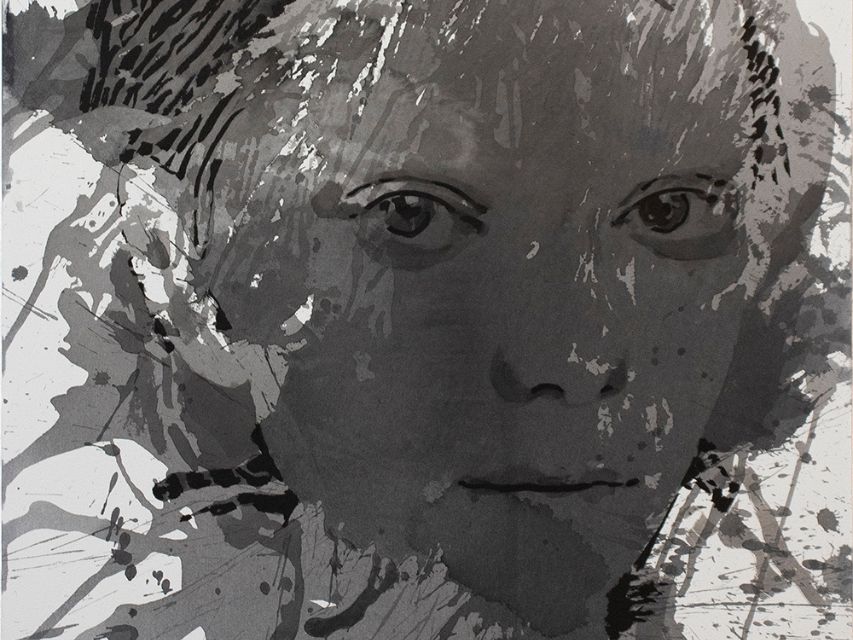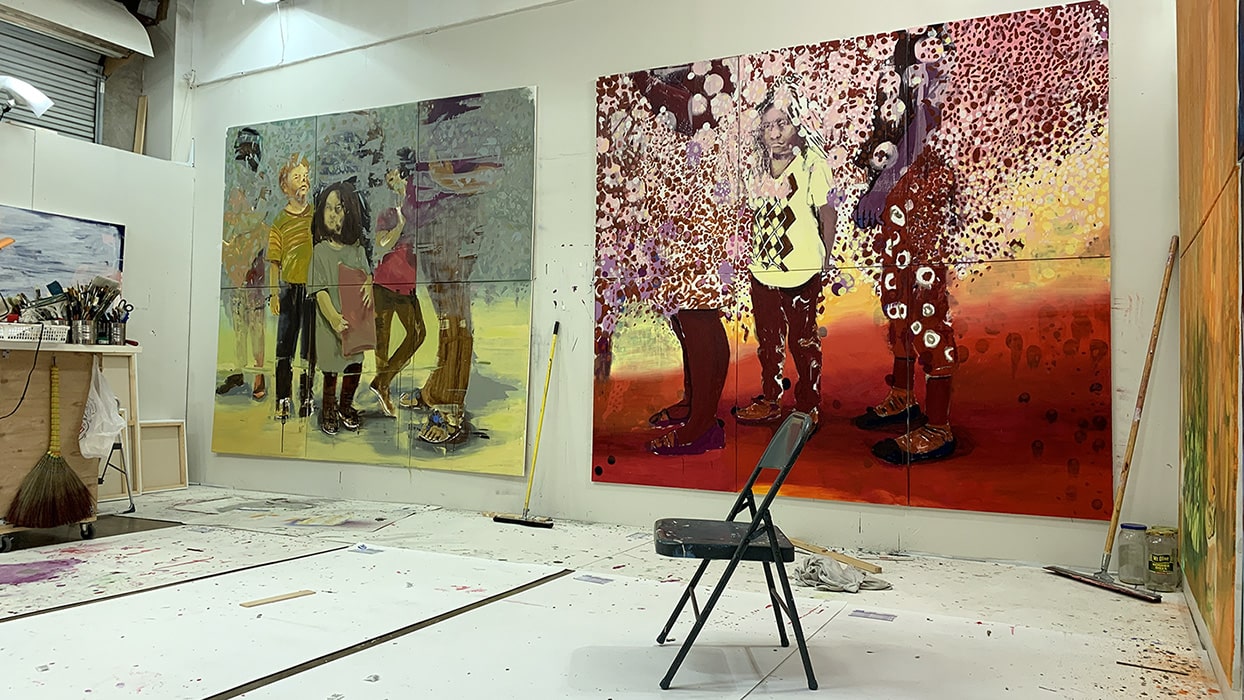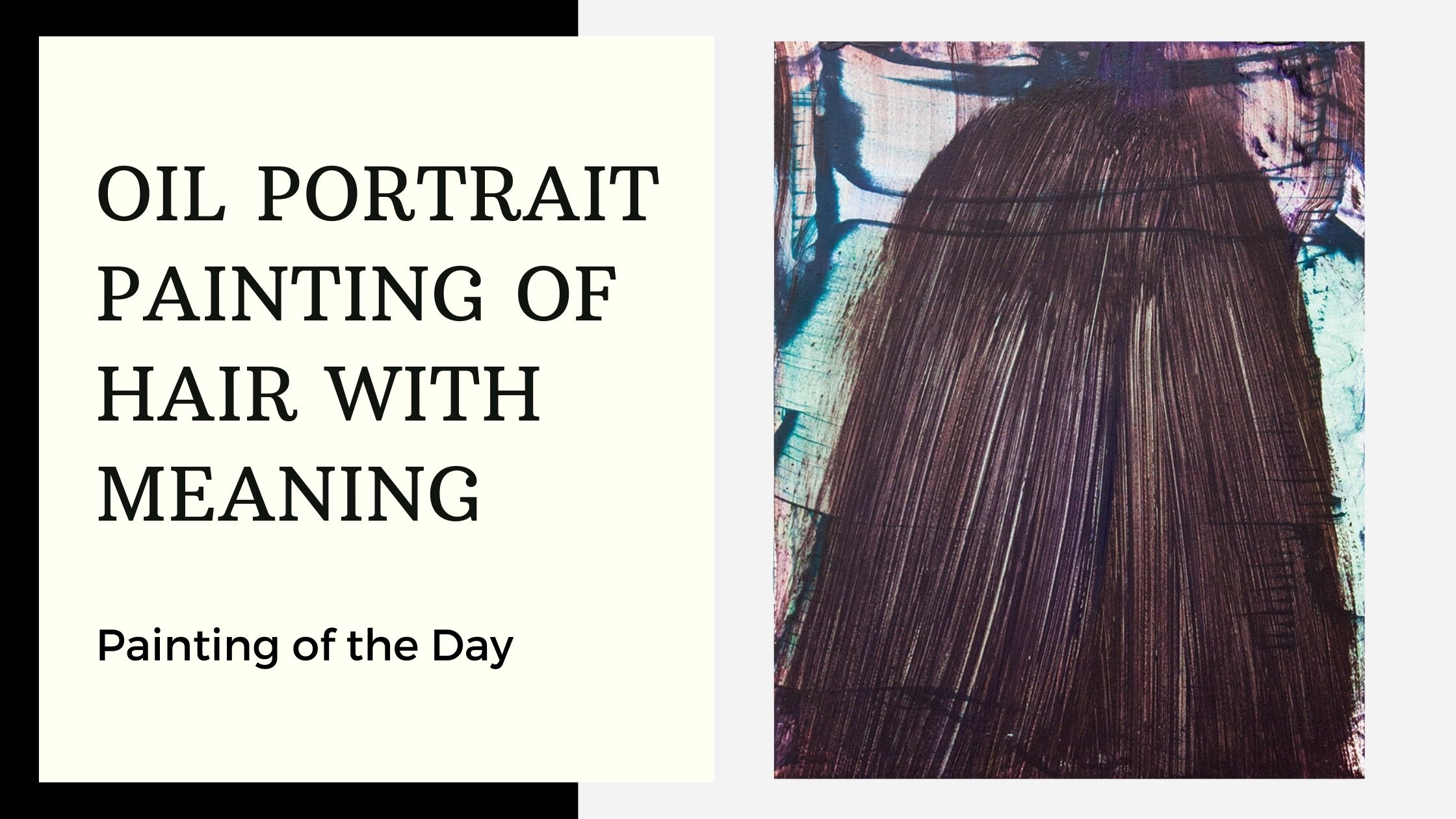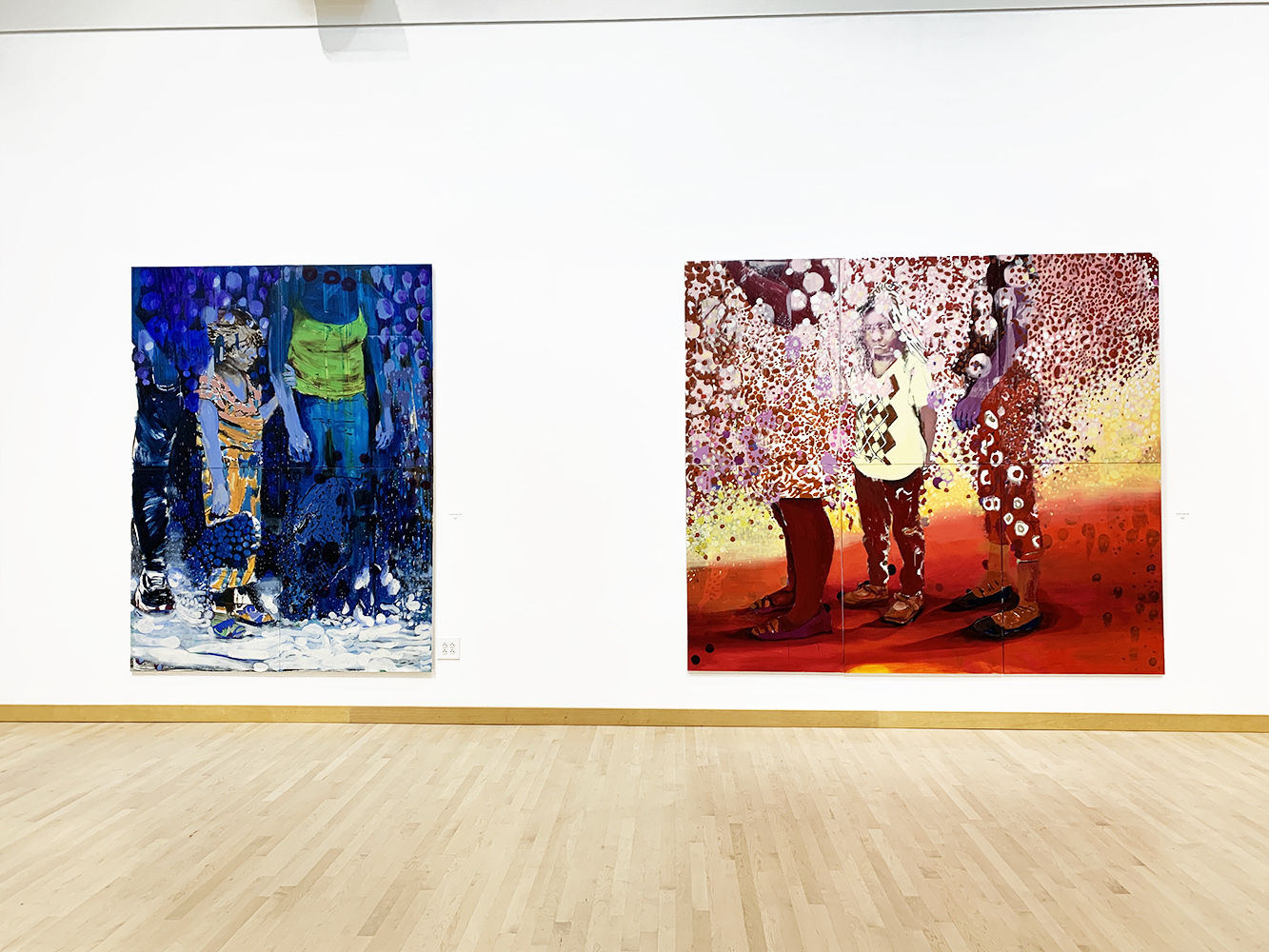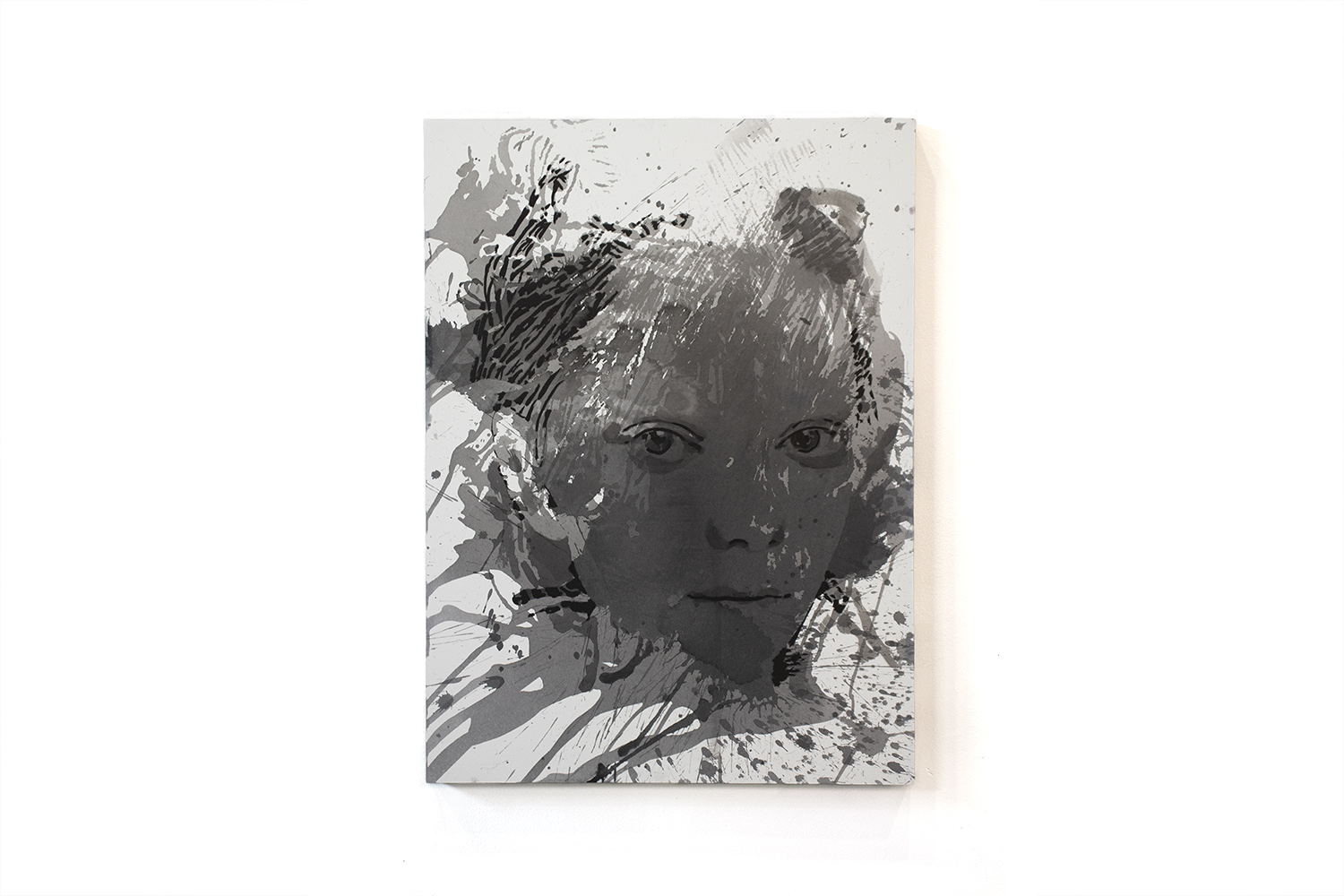
Navigating the Void: “Owing to the Absence” and the Artistic Process
The Interplay of Shadows: Unveiling Meaning in Monochrome
As the creator of “Owing to the Absence,” I am immersed in the stark contrasts and dynamic interplay of shadow and light that defines this ink on paper artwork. Mounted on a wood panel and measuring 30×22 inches, the piece is a statement of monochromatic palettes’ expressive power. The absence of color in this piece is not a deficiency but a deliberate choice, accentuating the subtleties of tonal variations and the profound depth they can convey.

In this article, you will learn:
- The Essence of Artistic Expression in Monochrome: How “Owing to the Absence” utilizes a stark contrast of shadow and light to create a profound narrative within a monochromatic palette, emphasizing the expressive power and emotional depth achievable without the use of color.
- The Captivating Power of the Gaze explores how the subject’s gaze in “Owing to the Absence” acts as a focal point amidst chaotic strokes, drawing viewers into a narrative filled with introspection and subtle emotion.
- Fluidity and Memory in Artistic Mark-Making: A look into how the organic fluidity of ink on paper mimics the unpredictable nature of memory and existence, lending the artwork an ethereal quality that blurs the lines between emergence and dissolution.
- Dialogue Between Material and Spirit: Insights into how “Owing to the Absence” transcends its physical components to dialogue with the intangible aspects of human emotion and presence, creating a piece that compels contemplation.
- Sumi Ink and Cold Press Paper as Artistic Mediums: An examination of the traditional techniques and materials used in “Owing to the Absence,” highlighting how Sumi ink and cold press paper contribute to the artwork’s depth and texture.
- Historical and Artistic Implications of Absence: A discussion on the multifaceted concept of absence as reflected in “Owing to the Absence,” from its historical echoes in lost civilizations to its thematic presence in art, theater, cinema, and philosophy.
- Abstract Expression and Emotional Resonance: An analysis of how the abstract elements in “Owing to the Absence” engage viewers in a personal and collective exploration of emotion, encouraging a dialogue that transcends the visual to touch upon the experiential.

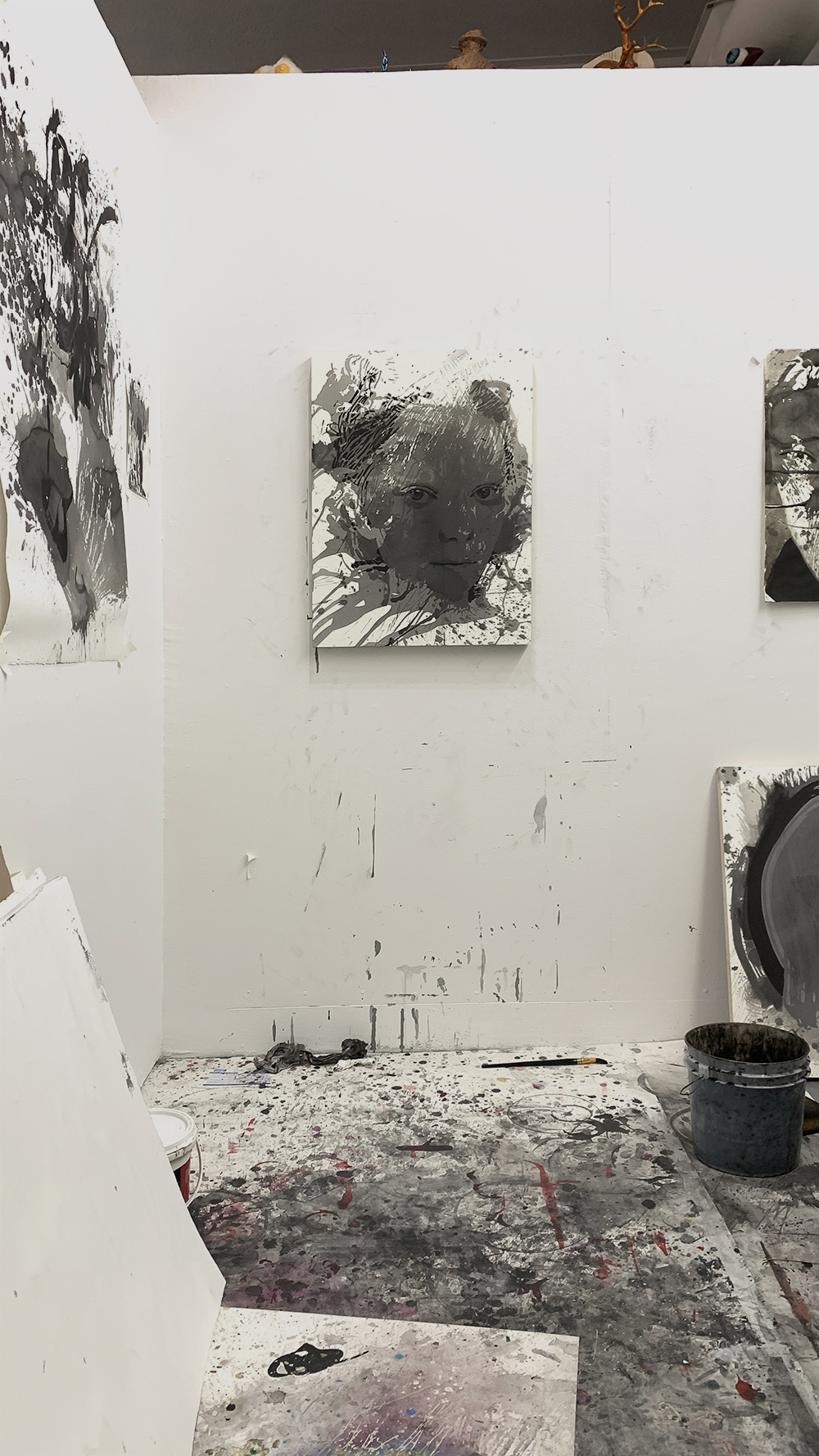
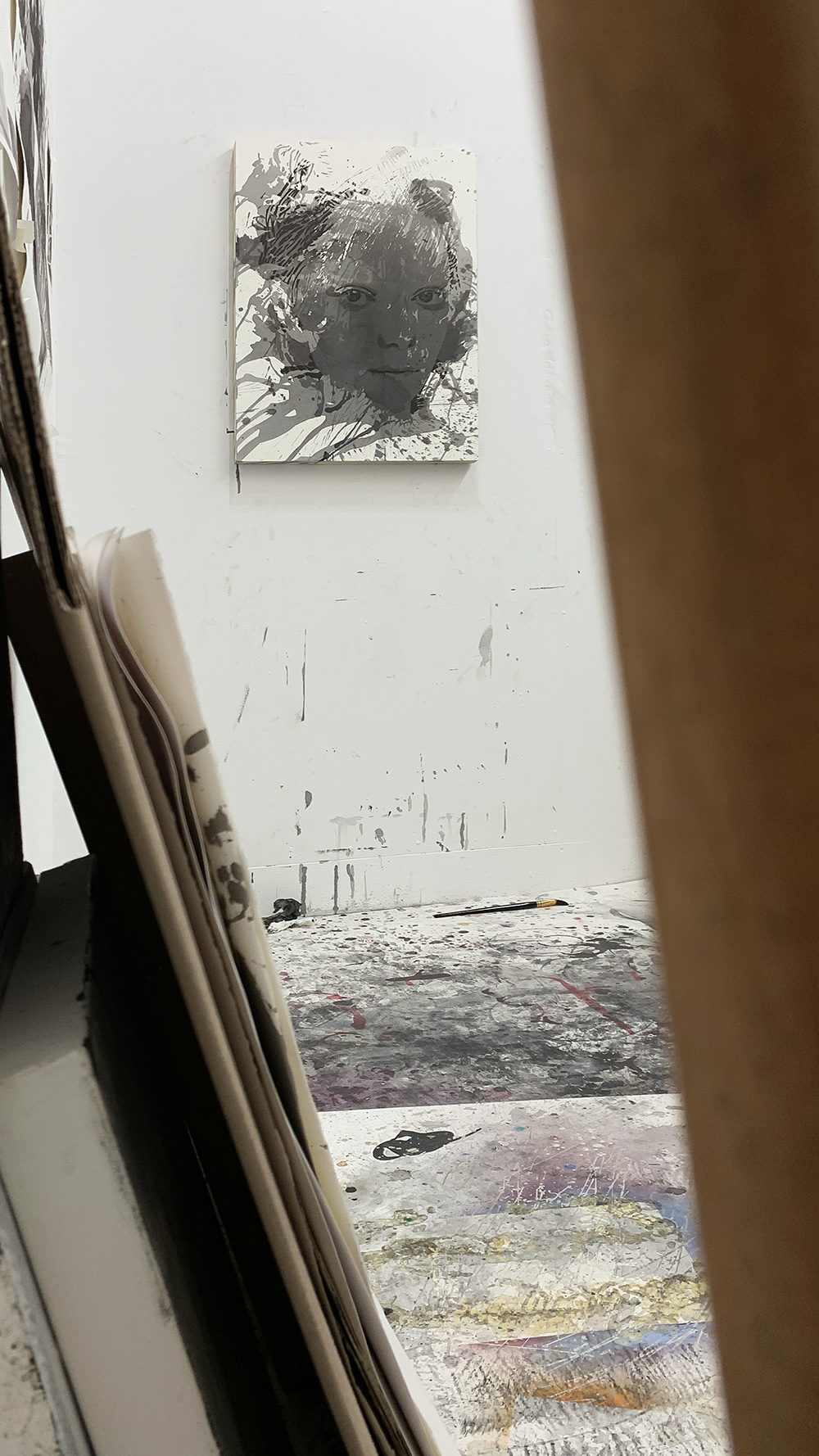
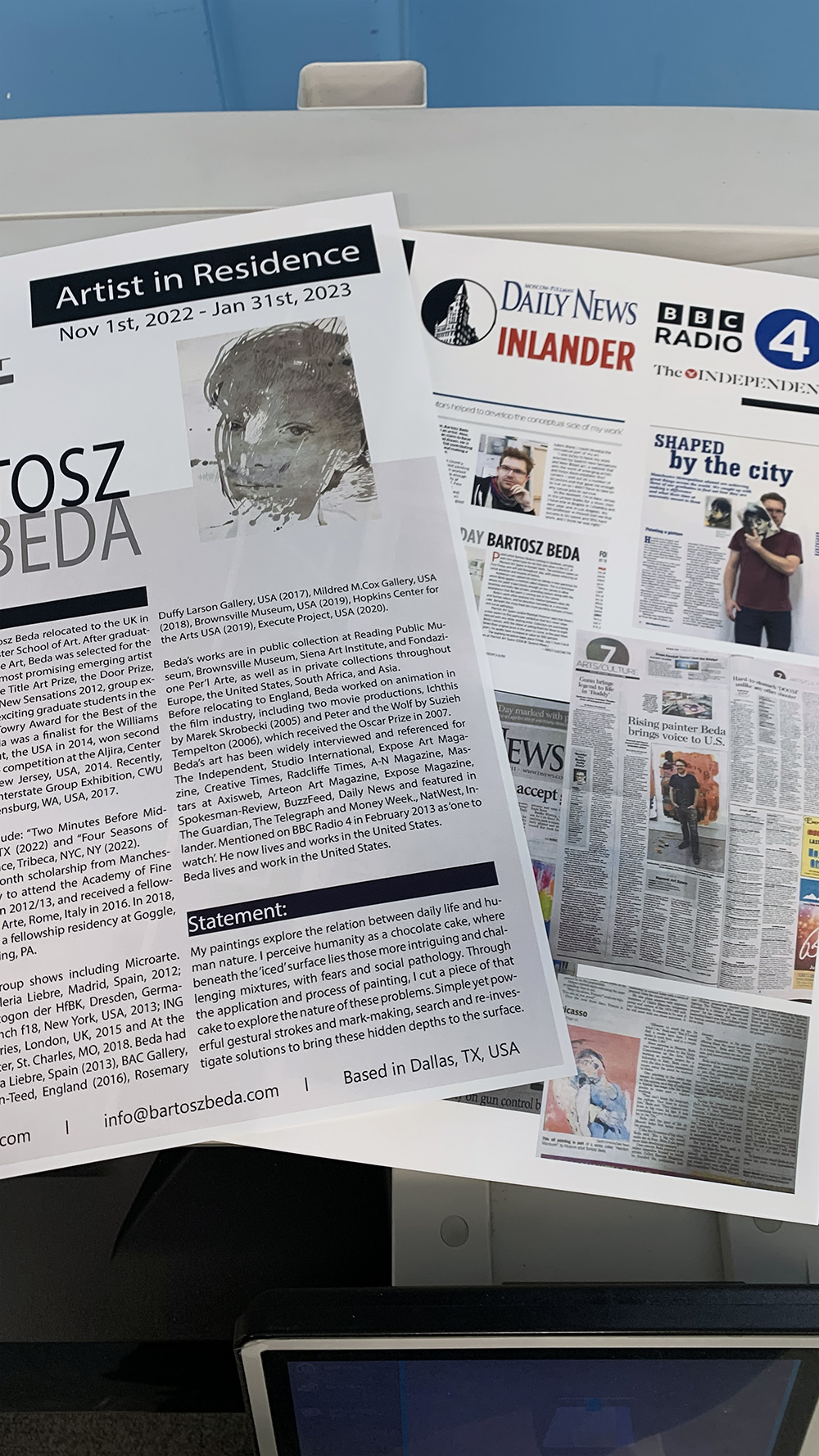
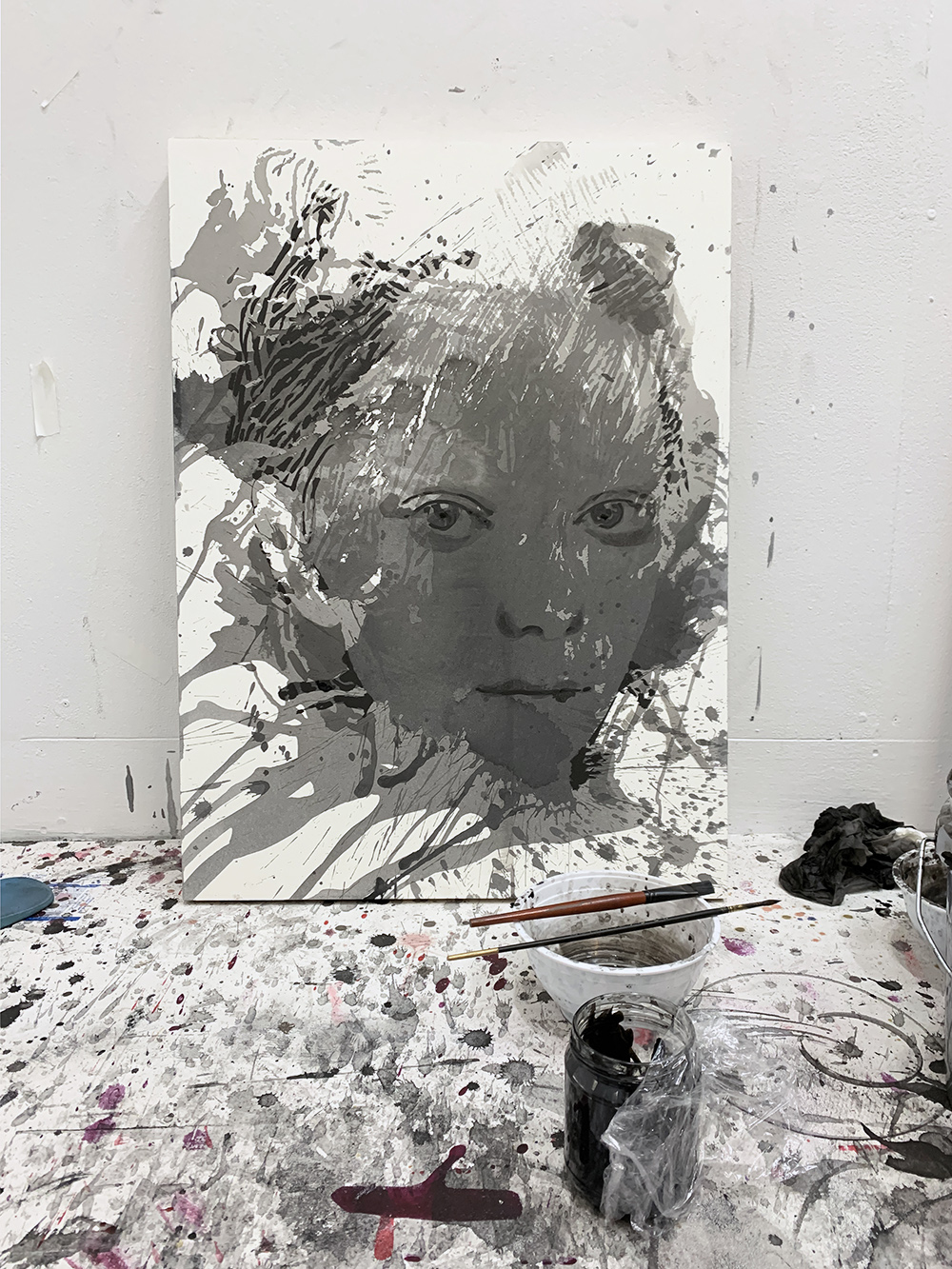
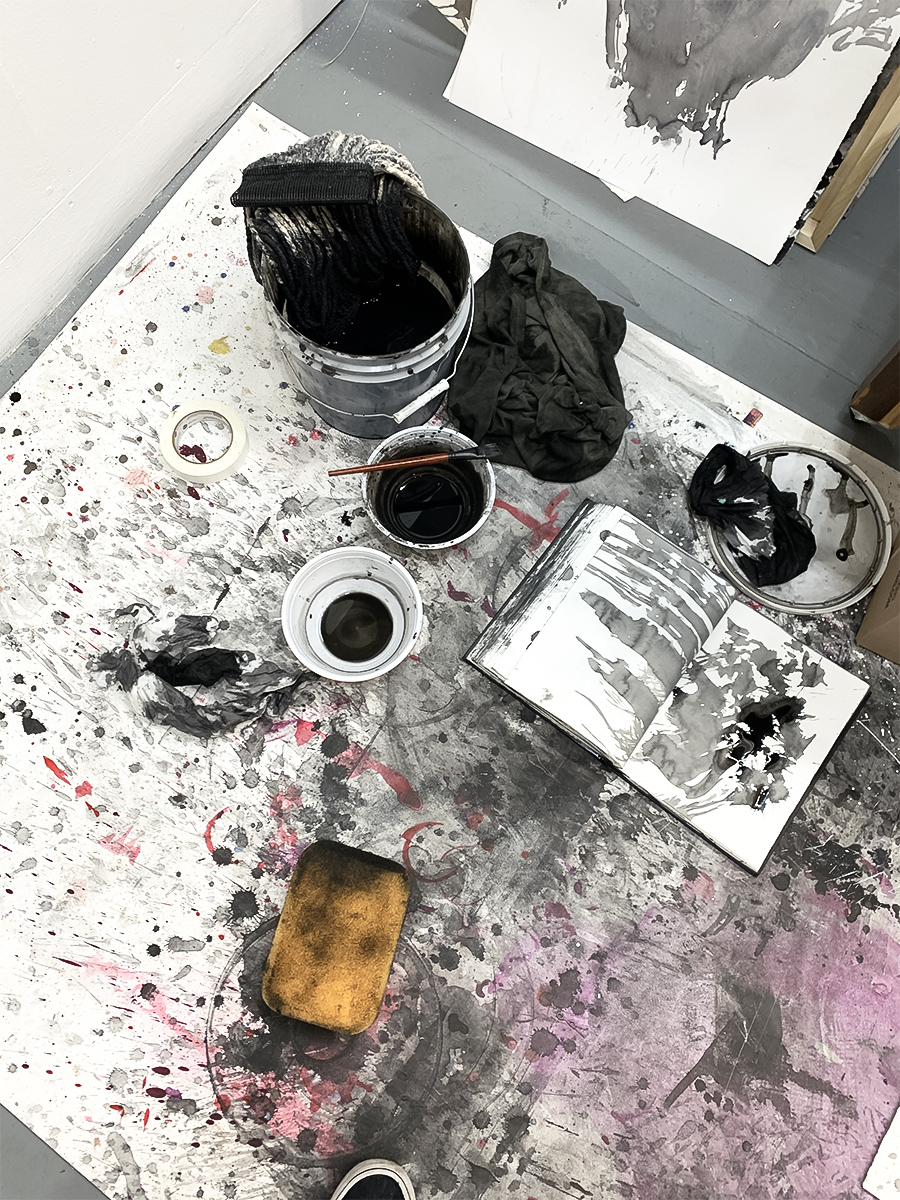
Capturing the Gaze: Windows to the Soul
In this work, the subject’s gaze is captured and elusive amidst a flurry of ink that seems to move and settle simultaneously. The eyes, a focal point, are pools of clarity within the tempestuous sea of strokes and splatters surrounding them. They draw you in, suggesting a narrative brimming with introspection and a whisper of melancholy.
The Fluidity of Memory: Ink’s Ethereal Mark-Making
The medium’s fluidity is evident in the drips and runs, an organic process that echoes the unpredictable nature of memory and existence. The splashes of ink that break the figure’s outline give the portrait an ethereal quality as if the subject is simultaneously emerging from and dissolving into the ether.
A Dialogue with the Human Spirit: The Intangible Made Tangible
“Owing to the Absence” is not just an exploration of form but a dialogue with the very essence of what it means to capture the human spirit on a tangible surface. It’s where the physicality of the materials used collides with the intangible qualities of human emotion and presence, creating a piece that is as contemplative as it is compelling.

Sumi Ink and Cold Press: Mediums with a Message
Sumi ink is a black ink traditionally used in East Asian calligraphy and brush painting from China. It is made from soot, known as lampblack, combined with glue derived from animal collagen. The soot is collected by burning pine wood or certain vegetable oils, creating a rich black substance. This soot is then mixed with the glue and solidified into sticks or cakes. To use Sumi ink, the solid stick is gently ground against an inkstone with a small amount of water until the desired concentration and consistency are achieved. The resulting liquid ink is known for producing a range of tones from the deepest blacks to the lightest grays, depending on its dilution.
Cold press paper refers to a type of paper that has a slightly textured surface. It is called “cold press” because of the method used to produce this texture, where the paper pulp is pressed through cold metal rollers. This texture is particularly appreciated in watercolor and ink applications because it can hold pigments well and allows for subtle gradations in tone and color.
Mounting paper on a wood panel involves adhering the paper to a solid support. This process starts by applying a layer of adhesive to the panel, which can be a specific archival glue or medium designed for this purpose. The paper is laid over the panel, ensuring it is smooth and free of air bubbles. This provides a firm surface for the artwork and prepares it for display without the need for glass framing. Mounting on the wood panel can enhance the artwork’s longevity and make it ready for exhibition, combining traditional paper-based techniques with a more durable and presentable format.

The Artistic Meditation on Absence
“Owing to the Absence,” my work with ink on paper mounted on a wood panel, embodies a meditation on the concept of absence and its multifaceted implications historically, artistically, and within the broader human experience.
Echoes of Lost Civilizations in Ink
Historically, the theme of absence is woven through the narratives of lost civilizations and the voids they leave behind, much like the empty spaces within my painting. Consider the abandoned ruins of the Maya or the vanishing acts of the Indus Valley civilization—each tells a story where the silence and gaps speak as loudly as the remnants.
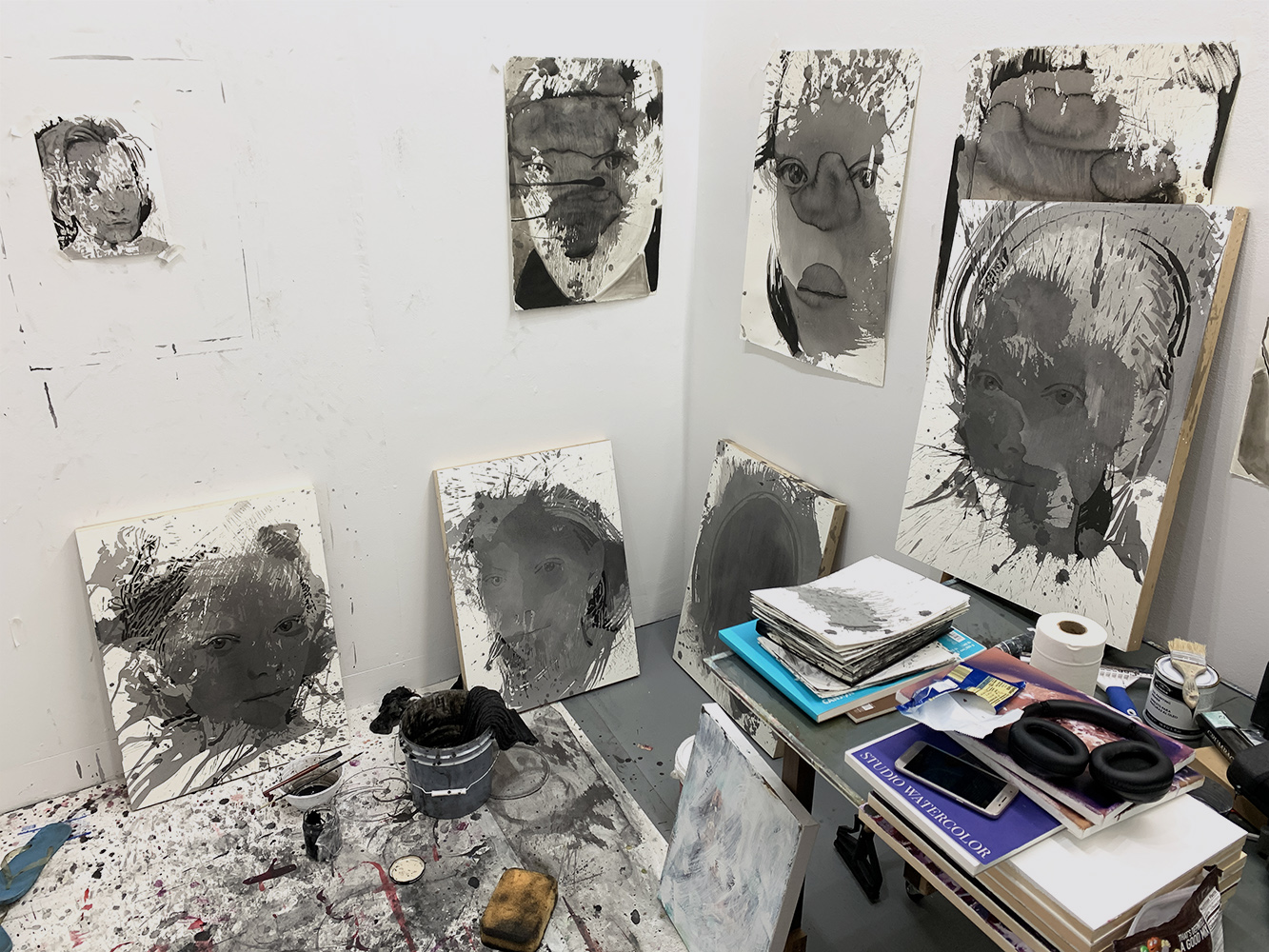
Negative Space: A Dialogue in Art History
In art history, the concept of absence is a recurring theme. The negative space in Asian ink wash paintings, as important as the brush strokes themselves, influenced my approach to this piece. This principle resonates with the ideas of the Italian artist Lucio Fontana, whose slashed canvases invite viewers to ponder the space behind the surface. Similarly, my painting encourages you to consider the ink’s presence and the space it circumnavigates.
Theater’s Use of the Unseen
Theater, too, employs absence poignantly. Samuel Beckett’s “Waiting for Godot” is a masterpiece that uses the absence of the titular character to profound effect, leaving audiences to grapple with the weight of unmet expectations and the presence of the void.
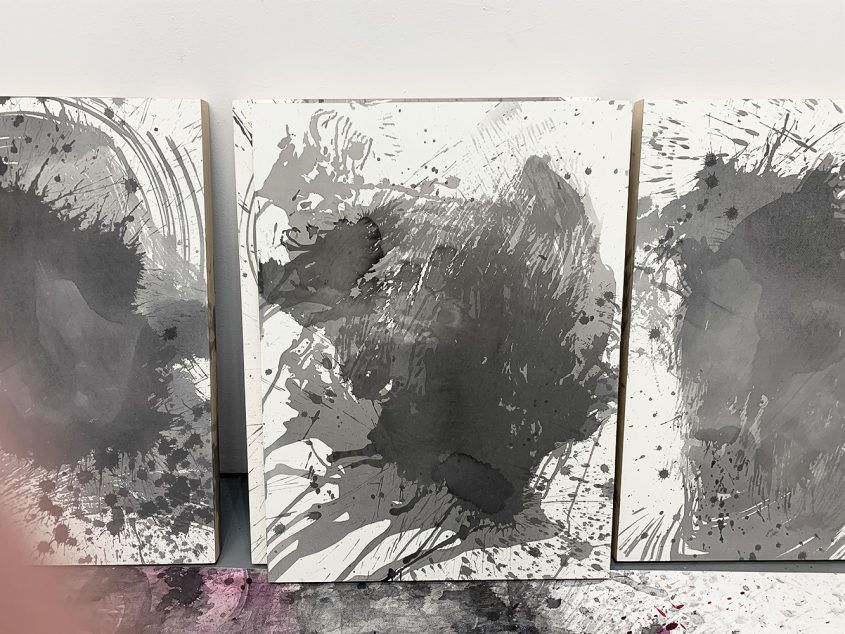
Cinematic Voids: Telling Stories of Absence
Cinematic expressions of absence are powerful, exemplified in films like “Paris, Texas,” where the protagonist’s missing years haunt every frame, and “The Searchers,” where the absence of the kidnapped girl drives the entire narrative. These films echo the sentiments of my painting, where the story is as much about what is not seen as what is.
Philosophical Contemplations on Absence
Philosophically, the concept of absence has been a subject of contemplation from Sartre’s notion of ‘lack’ to Derrida’s ‘absence within presence’ in deconstruction. My artwork offers a visual counterpart to these philosophical musings, where the absence is a space for the audience’s projections and reflections.
Psychologically, the idea of absence can be linked to the human condition of loss and longing. The spaces in my work can reflect the Jungian ‘shadow,’ the parts of our psyche that are yet not fully revealed or understood. The absence on my canvas can represent the unconscious, the unseen forces that shape our existence.
The Existential Layers of Art and Life
The philosophical underpinnings of absence in my work “Owing to the Absence” might also be traced to the existential musings on the meaning and the voids of life and to psychological explorations of memory, where what is omitted can be as telling as what is remembered.
In conclusion, “Owing to the Absence” is a canvas that invites an exploration of the seen and unseen, the known and unknown, urging you, the viewer, to fill the voids with your interpretations, memories, and understanding—thus making the act of viewing a profoundly personal and reflective experience.

Abstract Expression and Emotional Depth in “Owing to the Absence”
The abstract elements in “Owing to the Absence” play a critical role in the composition, evoking a sense of depth and emotion through their indeterminacy. The fluidity and dynamism of the ink strokes, the gradations and contrasts between light and dark areas, all contribute to a visual experience that is open to interpretation and rich in emotional resonance.
Echoes of Franz Kline: A Comparative Study
This approach to abstraction can be compared to the work of the Abstract Expressionist artist Franz Kline. Kline’s paintings, characterized by their bold, black strokes against white backgrounds, echo a similar sentiment to “Owing to the Absence.” There is a shared emphasis on the power of gesture and the significance of the spaces between marks. In Kline’s iconic painting “Chief” (1950), for example, there is a striking balance between the assertive black forms and the white space around them, a balance that is mirrored in my work.
The juxtaposition of presence and absence in Kline’s “Chief” resonates with the thematic essence of my painting. His work invites viewers to search for meaning within abstract forms and to consider the interplay between the physical strokes of paint and the intangible feelings they evoke. Similarly, “Owing to the Absence” is not just an arrangement of ink on paper; it’s a visual poem that speaks to the spaces within us—the absences that shape our thoughts and feelings.
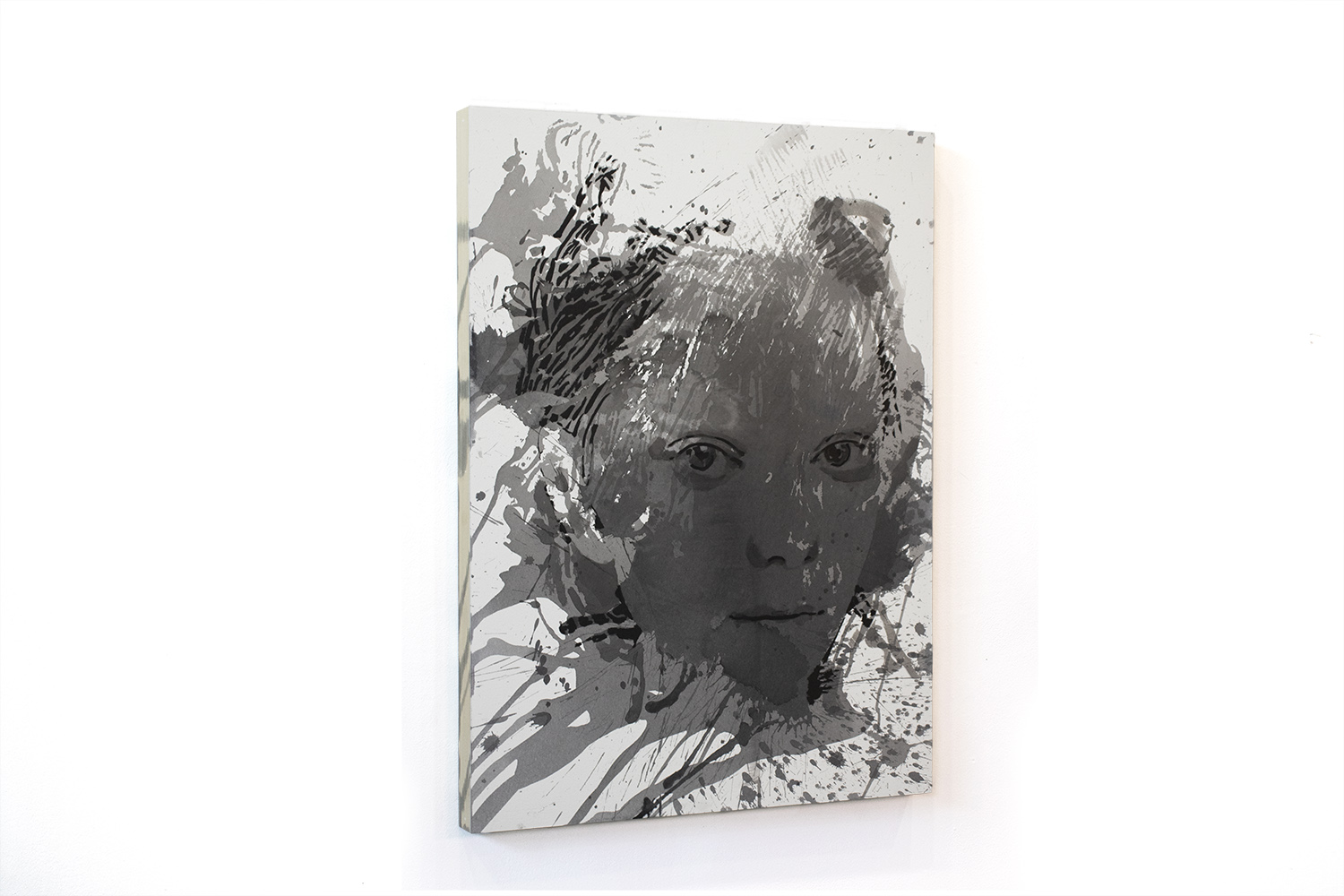
The Language of Abstraction: Beyond the Visual
By engaging with the abstract, both Kline and I ask the viewer to create meaning and delve into the personal and collective unconscious. The abstract elements become a language without words, a means to express what is felt rather than seen, and to confront the viewer with the presence of absence, encouraging a dialogue that transcends the visual and enters the realm of the experiential.
Reflecting upon the journey through “Owing to the Absence,” a body of work that has been the subject of profound scholarly and artistic exploration, I find myself at the confluence of abstract expression and emotional depth. This piece, crafted with Sumi ink on cold press paper mounted on a wood panel, is a testament to human emotion’s complexities and the myriad interpretations that art invites.
Crafting a Visual Dialogue with “Owing to the Absence”
The work is anchored in the rich tradition of ink painting, drawing from the historical depths of East Asian art while conversing with the bold abstraction of Western modernism, exemplified by masters like Franz Kline. Yet, it diverges into its unique narrative, encapsulating the nuances of absence and presence, the seen and the unseen, the spoken and the silence.
With its stark contrasts and gestural dynamism, this collection invokes a visceral response that transcends cultural and temporal boundaries. It serves as a mirror to the viewer’s soul, inviting introspection and a personal odyssey into the spaces that define our inner selves. Through the abstract language of ink and form, “Owing to the Absence” engages in a silent dialogue with the audience, a dialogue that is as much about the voids as it is about the strokes that shape them.

Philosophical Inquiry through Artistic Expression
The series becomes a philosophical inquiry, as much as a visual spectacle, questioning the nature of existence and expression. It is a chronicle of the intangible, a dance of shadows and light that reflects the ebb and flow of the human condition. As an artist, I offer this work as a creative expression and an open-ended question, a canvas where each viewer may find their answers and reflections. The conclusion of this exploration is not an end but a beginning—a point of departure for countless journeys into the self and the vast landscape of human emotion.


